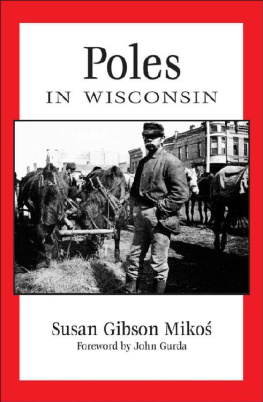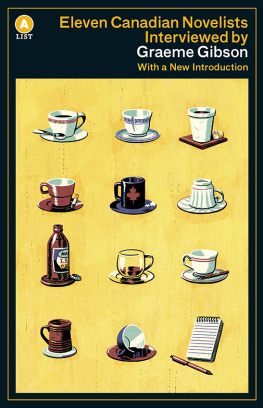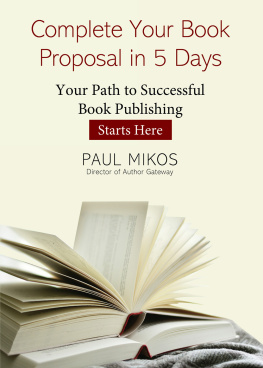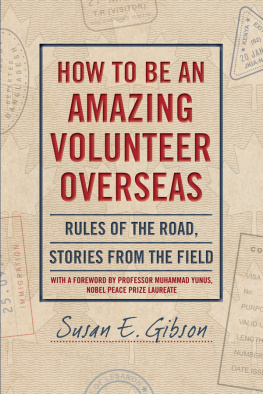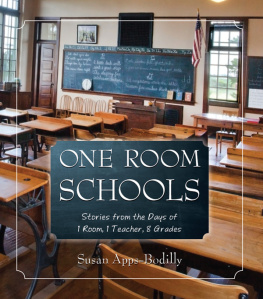Susan Gibson Mikos - Poles in Wisconsin
Here you can read online Susan Gibson Mikos - Poles in Wisconsin full text of the book (entire story) in english for free. Download pdf and epub, get meaning, cover and reviews about this ebook. year: 2012, publisher: Wisconsin Historical Society Press, genre: History. Description of the work, (preface) as well as reviews are available. Best literature library LitArk.com created for fans of good reading and offers a wide selection of genres:
Romance novel
Science fiction
Adventure
Detective
Science
History
Home and family
Prose
Art
Politics
Computer
Non-fiction
Religion
Business
Children
Humor
Choose a favorite category and find really read worthwhile books. Enjoy immersion in the world of imagination, feel the emotions of the characters or learn something new for yourself, make an fascinating discovery.
- Book:Poles in Wisconsin
- Author:
- Publisher:Wisconsin Historical Society Press
- Genre:
- Year:2012
- Rating:5 / 5
- Favourites:Add to favourites
- Your mark:
- 100
- 1
- 2
- 3
- 4
- 5
Poles in Wisconsin: summary, description and annotation
We offer to read an annotation, description, summary or preface (depends on what the author of the book "Poles in Wisconsin" wrote himself). If you haven't found the necessary information about the book — write in the comments, we will try to find it.
Poles in Wisconsin — read online for free the complete book (whole text) full work
Below is the text of the book, divided by pages. System saving the place of the last page read, allows you to conveniently read the book "Poles in Wisconsin" online for free, without having to search again every time where you left off. Put a bookmark, and you can go to the page where you finished reading at any time.
Font size:
Interval:
Bookmark:
Poles
IN W ISCONSIN
Susan Gibson Miko

Published by the Wisconsin Historical Society Press
Publishers since 1855
2012 by the State Historical Society of Wisconsin
E-book edition 2012
Publication of this book was made possible in part by a grant from the Amy Louise Hunter fellowship fund.
For permission to reuse material from Poles in Wisconsin , (978-0-87020-422-7, e-book ISBN 978-0-87020-590-3) please access www.copyright.com or contact the Copyright Clearance Center, Inc. (CCC), 222 Rosewood Drive, Danvers, MA 01923, 978-750-8400. CCC is a not-for-profit organization that provides licenses and registration for a variety of users.
wisconsinhistory.org
Photographs identified with WHi or WHS are from the Societys collections; address requests to reproduce these photos to the Visual Materials Archivist at the Wisconsin
Historical Society, 816 State Street, Madison, WI 53706.
The excerpt of Memoir of My Life (Polish version) by Maciej Wojda is used by permission of the Polish Museum of America in Chicago, Illinois.
Designed by Jane Tenenbaum
16 15 14 13 12 1 2 3 4 5
The Library of Congress has cataloged the printed edition as follows:
Mikos, Susan Gibson.
Poles in Wisconsin / Susan Gibson Mikos.
p. cm.
Includes bibliographical references and index.
ISBN 978-0-87020-422-7 (pbk. : alk. paper) 1. Polish Americans Wisconsin History. 2. Polish Americans Wisconsin Social life and customs. 3. Immigrants Wisconsin History. I. Title.
F590.P7M55 2012
977.5'0049185 dc23
2011044941

Acknowledgments
This small book on a large subject could not have been written without the groundwork laid by others. Besides the authors listed in the Selected Bibliography, there are a number of scholars whose research contributed substantially. They include Steven Avella, Dariusz Ciemniewski, Victor Greene, John Gurda, Martin C. Perkins, John Radzilowski, Thaddeus Radzilowski, Helen Stankiewicz, Edmund Zawacki, and many more.
I am indebted to the Independence Public Library, the Milwaukee County Historical Society, the Milwaukee Public Library, the Polish Museum of America, the Polish National Catholic Church Commission on History and Archives, the Portage County Historical Society, the Pulaski Area Historical Society, the Archives Department of the University of WisconsinMilwaukee Libraries, the Nelis R. Kampenga Archives of the University of WisconsinStevens Point, and the Wisconsin Historical Society for generously sharing their collections and expertise.
Finally, I wish to thank the Wisconsin Historical Society Press, especially director Kathy Borkowski and editor Sara Phillips for skillfully shepherding this book through the development process.


FOREWORD
The story of Wisconsins Poles, like the story of virtually every Badger State ethnic group, is a chronicle of family. The immigrants dreamed and labored collectively in the Old World, and when they chose to leave, they made both the decision and the crossing together. First by the hundreds and then by the thousands, Poles traded the hardships they had known in the heartland of Europe for new lives in the heartland of North America.
All too often, it was an even trade. Whether they were grubbing out stumps to clear fields in the Cutover of northern Wisconsin or keeping up with insatiable machines in industrial centers like Milwaukee, Polish immigrants worked brutally long hours at backbreaking tasks for meager financial rewards. But the newcomers also built communities communities of remembrance and hope. They were determined to transplant the traditions they had received from long-forgotten ancestors, and they were just as determined to make the sacrifices they considered necessary for the next generations success.
As one of the half-million Wisconsinites who trace their roots to Poland, I am the grateful beneficiary of those sacrifices. The story of my own family could hardly be more typical. My great-grandparents, Franciszek and Apolonia Gurda, owned a small farm near Sawianowo, a minuscule village in what is now northwestern Poland. When their oldest son, another Franciszek, was threatened with conscription into the German army, they promptly sold their land, their livestock, and most of their possessions to finance the long journey to America. An older brother, Micha Gurda, had already settled in Milwaukee, and in 1889 the states largest city made room for another branch of my family.
With a handful of exceptions, the Poles came too late to be pioneers. Wisconsins best agricultural lands were largely taken by the late 1800s, and earlier arrivals had long since determined the economic direction of the states urban centers. Although farming was all he had ever known, Franciszek Gurda took a job in a blast foundry, and he never rose above the rank of laborer. The work was hard when there was work at all, but his foundry wages were sufficient to buy a tiny cottage on Milwaukees South Side, within sight of the twin spires of St. Stanislaus Church. It was there that he and Apolonia raised five children to adulthood.
The distance the immigrants traveled can be measured in more than miles. Three generations later, my brothers and I all have masters degrees, live in comfortable homes, and work in professions that our ancestors would consider, by any fair standard of comparison, soft. Im not sure what Franciszek and Apolonia would make of their descendants if they recognized us at all but I can guarantee they would be surprised.
It is my familys odyssey and thousands more like it that Susan Miko chronicles on the macro level in Poles in Wisconsin . Her account is, I believe, the most comprehensive and even-handed treatment ever published of an ethnic group that has long been one of the states most important.
Wisconsin was clearly a favored destination for Polish immigrants. Milwaukee became one of the nations great Polish centers a development studied in depth by other authors. Miko tells the city side of the story, but she balances it with a detailed description of Polish settlements far removed from the densely packed neighborhoods and entry-level factory jobs of southeastern Wisconsin. From Stevens Point and its surrounding farm region to the clusters of settlements north of Green Bay, in Trempealeau County, and in a dozen other locales, Polish immigrants left an enduring mark on the states landscape.
Whether they settled in the city or in the country, Wisconsins Poles generally stood out from their neighbors: in their hunger to own land, in their practice of what scholars have termed additive architecture, in their staunch (but never exclusive) Catholicism, and in their taste for grand houses of worship. Susan Miko tells the story of Polish Wisconsin in significant detail, from its folkways to its fraternal groups, and she tells it with a welcome attention to context, both global and local.
The story continues in the twenty-first century, of course, and it continues in directions the immigrants could hardly have imagined. Assimilation has kept pace with social and economic advancement, but for many of us, the old ties still bind. When my relatives gather each Christmas to break the opatek wafer and exchange heartfelt wishes for the new year, when I hear my children sing Sto Lat (100 Years) for a great-aunts birthday, and when I pause to consider the distance weve come, I still feel an overwhelming sense of wonder. After all these generations, the story of Polish Wisconsin remains, at root, a story of family.
Next pageFont size:
Interval:
Bookmark:
Similar books «Poles in Wisconsin»
Look at similar books to Poles in Wisconsin. We have selected literature similar in name and meaning in the hope of providing readers with more options to find new, interesting, not yet read works.
Discussion, reviews of the book Poles in Wisconsin and just readers' own opinions. Leave your comments, write what you think about the work, its meaning or the main characters. Specify what exactly you liked and what you didn't like, and why you think so.

